Pages
January 31, 2012
brand new year, same old standbys (and a few new things)
Happy New Year!
...well, this being the last day of January, I suspect it might be kind of wrong for one to say her New Year's greetings. That said, it would be just not right if I didn't say it in my very first entry of the year here, so that's that. I hope you all have made a good start to 2012.
New Year's holidays were a very quiet, family affair for us, as we started off with a small feast for late breakfast on the 1st of January.
We spent the first few days kicking back, watching DVDs, sipping wines, and taking a walk around the place in the snow.
...and downing more booze (lots of bubbly - this was dry sparkling wine with some satsuma). We must have cleared up about half of our booze shelf during the holiday (with a big help from my big sister).
Besides booze, a big part of traditional Japanese New Year celebration is osechi, or a set of specially-made dishes, many of which have their roots going back to centuries ago. We don't do much of osechi in my family, but there are a few favorites, including kuromame (sweetened black soybeans) and kuri kinton (sweet chestnut & sweet potato mash).
As with many other osechi dishes, folks prepare their own kuromame or kuri kinton in Japan, but we tend to just buy pre-made ones in my family.
So that's pretty much it for me as far as traditional Japanese New Year food goes, but my focus has been more on the leftovers: turning some of these dishes/ingredients into desserts.
The very first dessert I made this year was this matcha and kuromame trifle with yuzu. Pieces of matcha sponge were doused in yuzu syrup that was made by combining dessert wine and fresh juice of yuzu, then layered with white chocolate and mascarpone cream as well as kuromame, and topped with a dusting of matcha powder, a few more kuromame, and thin slivers of yuzu peel. This made really lovely dessert.
But if I am honest with you, this was actually NOT what I meant to make in the first place. For the first dessert of the year, I wanted to make matcha and kuromame Swiss roll - something I hadn't made in a very long time. Variations of cream-filled Swiss rolls, commonly called 'roll cake' in Japan, are very popular treats among people here including myself, but I find it a bit too fussy to make and can't just be bothered to make one on my own.
That said, with a new year here I should try something new (or a bit different), I figured, and decided to give it a try - to a disastrous result. The problem was the matcha sponge sheet, which came out a little too fragile and there would be no way I could roll it with or without a filling. So I abandoned the whole idea and made trifle instead, a fuss-free dessert for which it doesn't matter how ugly or irregular a piece of sponge is, as you won't see it anyway.
Trifle is something I make rather often (for the very reason I've just mentioned), and although this was very tasty itself, I still couldn't help but feel a bit defeated. Trying something new for the New Year's first baking which ended up a flop, forcing you to resort to something you make all the time? Talk about starting off a new year on a new note.
But an experiment-minded baker shouldn't mope around just because one batch didn't go as well as they had hoped, so I pulled myself together quick and got down to a next project.
...which, as luck would have it, turned out to be another failure. A failure to me, anyway. Here I meant to bake adzuki rolls, a variation of cinnamon rolls with sweetened adzuki beans as a filling in lieu of the more common cinnamon sugar. I have been baking cinnamon rolls (a lighter, cardamom-spiked Finnish kind) quite a lot for the past several months, and am now pretty comfortable with baking them.
Now this is something I have mentioned more than once here, but I don't like anko, or sweetened adzuki bean paste. In fact, "don't like" is an understatement - I positively dislike it, for as long as I can remember. But oddly enough, that doesn't mean I dislike adzuki beans or dishes using them in general. I actually quite like sweetened adzuki beans, just plain boiled and sweetened. I can't put my finger on the factor that makes anko so off-putting for me when sweetened boiled adzuki beans are not, but I suspect it may have something to do with the process of making anko, in which you usually cook down boiled beans to a thicker texture with a more concentrated flavor of the beans and of course sweeter.
Anyway, there I was making my adzuki rolls by rolling out an yeasted dough (studded with black sesame seeds) and spread it with plain sweetened adzuki beans, which is widely available in a can in Japan. I rolled the whole thing up, cut the log into slices, and baked them in the oven. Simple enough.
But when I took a bite of one of the warm rolls, I noticed something was wrong. Another bite and I realized: it tasted like anko. My family all agreed, quite happily, that they'd consider them to be anko rolls; they are all big anko lovers and didn't see any problem there. But I for one did, shocked by the fact that I had just made an anko treat, even if by accident. I assumed that the oven baking might have had a similar effect to cooking down boiled beans, turning what was intended to be innocent adzuki rolls into evil anko rolls.
Whatever the reason might have been, this meant just one thing to me: my very first two batches of baking of the year both went very wrong. Now I positively felt beaten up, but I figured I couldn't let these two events jinx my baking for the remaining 363 days or so of the year, so I wiped my tears and got down to doing another batch:
This was another variation of cinnamon rolls, this time using the combination of matcha and kuromame (again). You see, kuromame beans would still hold their shape after oven-baking and had a smaller risk of turning into something else, I figured.
And so they did, to my great relief - and finished with a drizzle of melted white chocolate, here I had matcha-kuromame rolls with white chocolate.
For the dough, I have been using this recipe (in Japanese) for Finnish cinnamon rolls, which seems to be similar to many Finnish cinnamon roll recipes out there in English. Started with it, I added some toasted black sesame seeds to the cardamom-flavored sweet dough, and filled it with not cinnamon and sugar but matcha powder and sugar - and some chopped sweetened kuromame beans.
When you use matcha in bread baking, you'd often mix matcha powder into the dough as you would with matcha cakes. But for some reasons I don't fancy matcha-flavored bread dough very much even if I do enjoy matcha-flavored cakes, so here I used it as a filling instead. This worked well for me, as the matcha filling gave the buns a clear, vibrant flavor of the tea.
I thought about adding yuzu to the dough, but that would have made them too similar to the trifle I'd made earlier in terms of flavors (matcha, kuromame, white chocolate, and yuzu), so I resisted. I could have used some cinnamon in addition to the matcha powder, but these rolls tasted fine as they were and I was quite happy with them. More than anything, I felt so relieved to have made something as I had intended to. You could call it third time lucky, I guess.
Meanwhile, I had some boiled sweetened adzuki beans left at hand after the adzuki rolls (which my folks happily took care of), and I was determined to put them into a better use:
Why, ice-cream! Adzuki ice-cream is one of the easiest ice-cream to make, as long as you have cooked, sweetened adzuki beans ready (and like I said earlier, you can find them in a can at any super market in Japan). Just whip up some heavy cream, fold in the beans, and pop the whole thing in the freezer. That's all. The process is basically the same as that for the chestnut ice-cream I've been making for a while.
But here I wanted to do something a bit different, and decided to make it hojicha-adzuki ice cream by infusing the cream with hojicha (roasted green tea). I started by heating some heavy cream and hojicha leaves and let it steep as the mixture cooled. Once completely cool, I strained it to get rid of the tea leaves, and chilled the hojicha-infused cream before whipping it up lightly and adding sweetened adzuki beans to it. I also added a dash of brandy.
The tea infusing part does add an extra step to the otherwise dead-simple ice-cream making, but it was so worth it; the gentle malty note of hojicha paired so beautifully with adzuki beans, and made lovely ice-cream.
And the pale yellow ice-cream pictured alongside, by the way, was kuri-kinton ice-cream.
Despite the fact that it is called kuri-kinton where kuri means chestnuts in Japanese, kuri-kinton typically contains more sweet potatoes than chestnuts. But this year, instead of regular kuri-kinton we had kuri-kanoko, a 100% chestnut deal - no sweet potatoes, just good chestnuts sweetened with sugar and made into paste, and studded with whole sweetened chestnuts. Now don't get me wrong; I do love regular kuri-kinton very much, but I just thought this year we'd have kuri-kanoko, which is a specialty from Obuse, a charming little town in northern Nagano known for their chestnuts.
And as I decided to make kuri-kinton ice-cream, I thought I'd add some sweet potatoes to the mix, because otherwise it would become just chestnut ice-cream. So I cooked up a few slices of sweet potatoes, mashed them into chunky paste, and mixed it with some whipped heavy cream along with some kuri-kanoko, with a few chestnuts chopped into small pieces. I also added some brown sugar to adjust the sweetness, and a pinch of salt because you have a bit of salt in kuri-kinton. And oh, a dash of rum too. Just because.
This ice-cream, too, turned out pretty good for something I just whipped up by playing it by ear, and went really well with the hojicha-adzuki ice-cream.
Now it was middle of January and it was time for kagami-biraki, where you crack open your kagami-mochi and make oshiruko - sweet adzuki bean soup with mochi.
As another incarnation of cooked sweetened adzuki beans, oshiruko can be prepared using canned boiled adzuki beans. But for kagami-viraki, I like to make my oshiruko from scratch by cooking dried adzuki beans.
And adzuki beans happen to be one of the quickest to prepare from start to finish, as you don't need to soak them in water overnight (unless your beans are old). You wash the beans, and start cooking right off the bat.
Start with a plenty of cold water to cover the beans, bring it to a boil and cook for five minutes or so over high heat. Remove from heat, drain, and add fresh cold water so the beans are comfortably submerged. Bring it to a boil and reduce the heat to a gentle simmer, and cook until the beans are cooked soft, for about an hour; constantly add cold water to make sure the beans are covered in water, and skim the scum off every now and then.
When the beans are thoroughly cooked and soft, add sugar in a few additions; about a half of the dried beans by weight for a light soup, or up to the equal amount. Stir gently after each addition, and cook further taking care not to let it burn. Cook for another quarter an hour or so, then add a pinch of salt and remove from heat. It's now ready to eat, but if possible, leave it overnight before serving to allow the flavor develop.
That is how I usually make my oshiruko, but this year I prepared it using honey in place of sugar, and it turned out very well.
And as I made this, I had another thing in my mind to make using oshiruko:
Hot chocolate with marshmallows anyone?
If you wondered what oshiruko had to do with any of this, well, it's because this was adzuki hot chocolate with yuzu marshmallows! Or you could call it chocolate oshiruko, I think, but I see it as more of a drink (hot chocolate) than a soup (oshiruko).
I just prepared hot chocolate by mixing cocoa well with a bit of water in a saucepan, putting it over low heat and adding some of the oshiruko as you would with water, plus some chopped dark chocolate to boot. You could add some milk, but I didn't this time. I've seen a few recipes (in Japanese) when I tried and searched for aduzki hot chocolate recipes on the Internet, and many seemed to use canned cooked sweetened adzuki beans or even anko, which will sure work fine.
As for marshmallows, I made them myself, too.
I was going to just buy a store-bought, plain kind for the hot chocolate, but forgot to get one and thought I'd try and make my own. And if you are to make them at home, why not trying something other than just a plain sort? Hence the yuzu-honey marshmallows, and I made them based largely on this recipe, and added some grated fresh yuzu peel, replaced some of the water for the gelatin with fresh juice of yuzu, and also replaced the corn syrup with honey. I made a quarter of the recipe (using one egg white), and used a half of a yuzu for the peel and juice (about 1 Tbs).
I wanted my marshmallows to come in odd shapes and sizes, so I spooned the marshmallow mixture onto a surface (dusted thickly with a mixture of corn starch and confectioner's sugar). I might have made them look a little too odd, but you wouldn't mind it as they'd end up in hot chocolate, right?
The light, sweet, and slightly tart marshmallows made a lovely addition to the warm, rich hot chocolate, but they tasted absolutely delightful when I tried a few, freshly rolled in sugar and starch. Incredibly soft and fluffy, they were nothing like the stuff you'd buy from grocery stores and totally worth all the egg white whipping. I had tried homemade marshmallows a looooooong time ago when I was a teenager, but I'd forgotten how soft fresh ones would turn out. I ought to make them more often.
By the way, I've seen some adzuki hot chocolate recipes suggest you put some mochi (rice cake) or mochi dumplings in the drink, which I'd think would make it even more of oshiruko than hot chocolate.
But my all-time favorite way of eating mochi is to dust them in kinako, or roasted soybean powder (sweetened with a bit of sugar). As a kid, I remember thinking at Every New Year's that I could eat this every day for the rest of the year.
But I never did. Somehow, like mochi, kinako is one of those things that you seem to eat almost only during the New Year's time even though it is available all year around. So I always associate it with New Year holidays.
And this year, I thought I'd bake with kinako for a change. And I made, why, scones, which is another one of those things (like trifle and maybe crumbles) that I seem to be making all the time. But hey ho.
And with it, enter kuromame and yuzu, as well. Might as well.
Together, they made kinako scones with kuromame and yuzu. I started with this recipe (in Japanese) for kinako scones, and added some chopped kuromame beans and sliced yuzu peel soaked in honey - a byproduct of yuzu honey that I'm making a lot during winter, as I did last winter.
The scone dough is pretty standard enough, except it has a lot of kinako added to plain flour, and uses soy milk rather than regular milk.
The result was dense scones with a distinct flavor of kinako. I thought they were a bit hard - I might have overbaked them a bit, again - and worried they might turn rock-hard by the following day, but thankfully they didn't. Other than this texture issue, they tasted fine.
Another thing with kinako:
Chocolate rolled in kinako? Not exactly. These were kinako truffles with ginger, where a lot of kinako was mixed into smooth ganache that had been prepared using soy milk instead of heavy milk. This is a recipe created by Shiho Nakashima, a Japanese cook, food stylist, and baking book author, with a strong focus on whole, natural foods.
The recipe for these kinako truffles can be found in her chocolate book (in Japanese), and I added some chopped crystallized ginger.
The addition of kinako gave these truffles a curiously soft texture, almost reminiscent of wagashi (Japanese sweets). The problem was, my truffles didn't have that soft texture at first - perhaps due to the fact that it was a little too cold in our house. I ended up microwaving them for a few seconds, just to soften them up a bit. It worked.
And another recipe by Shiho Nakashima to wrap things up here...
Chocolate cake with kuromame and chestnuts, from another one of her books. Her original recipe is for kuromame chocolate cake, free of flour and butter (she uses premium cold-pressed rapeseed oil in place of butter for all or most of her baking items). And as is the case with many of her recipes, this also uses soy milk in the cake batter.
I've baked this cake before and completely fell for it - very chocolate-y, very rich and yet it manages to have a very light, melt-in-your-mouth texture thanks to the use of whipped egg whites. And kuromame goes really well with chocolate.
And so do chestnuts; thus I took the liberty of throwing in some steam-roasted chestnuts in addition to kuromame.
I had a few days of bliss, cutting a thick slice of the cake and having it for an afternoon break - or perhaps late at night. Coffee and tea both go well with it, but matcha latte worked particularly well.
And with this cake, I saw the last of my kuromame stock gone - along with the month of January that I had spent baking a bunch of stuff, trying a few new things to varying degrees of success, but enjoying the process nevertheless.
We got quite a lot of snow in January, for an area not particularly known for heavy snow. Snow, of course, can cause a lot of trouble to people, but I still find it really pretty, and enjoyed walking around the neighborhood with lots of thick layers on. But it may still be best to look at from inside a warm room with a warm drink in your hands.
I hope your first month of the year went well and full of good food. Here's to your very happy 2012 everyone! -cxx
Subscribe to:
Post Comments (Atom)


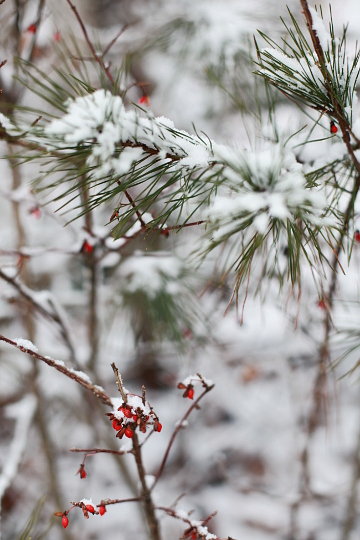
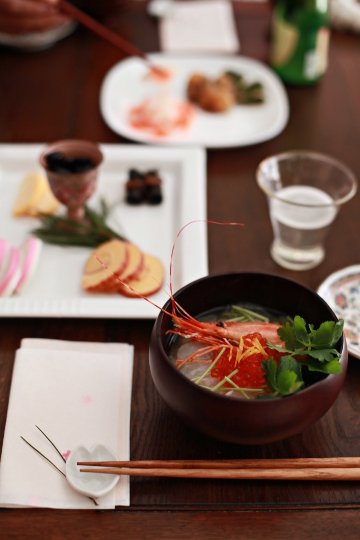


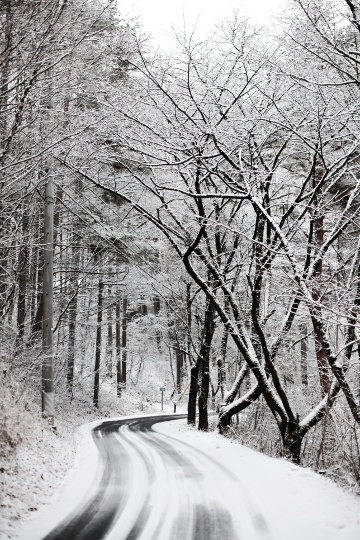



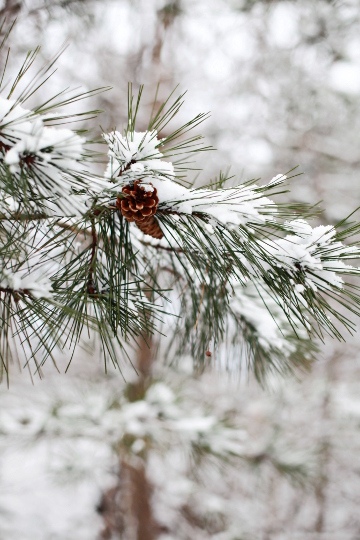
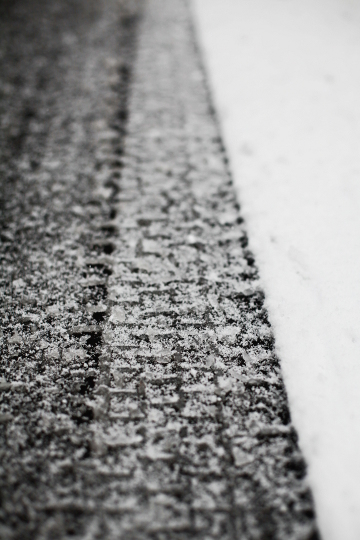
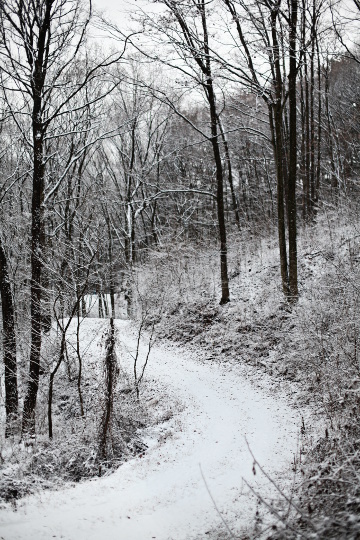

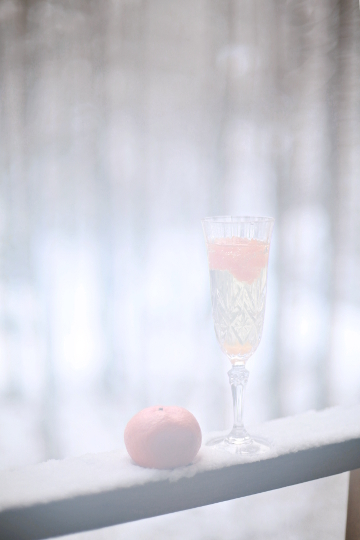


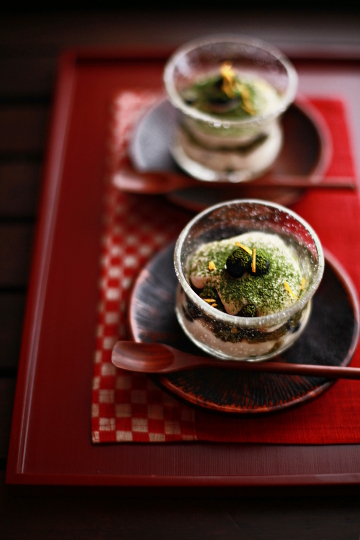
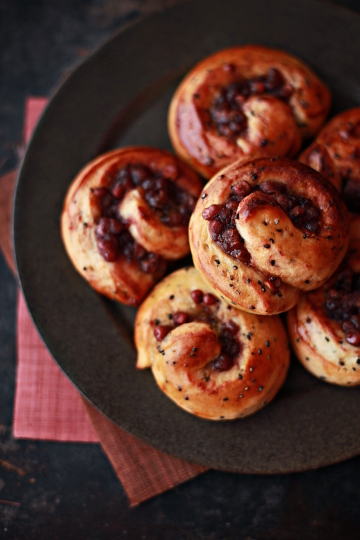

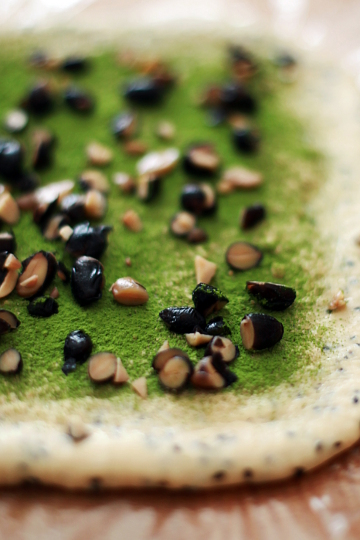
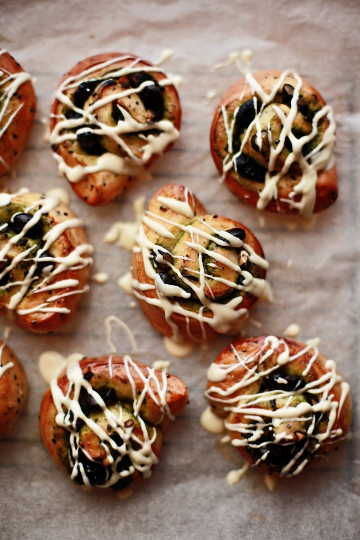


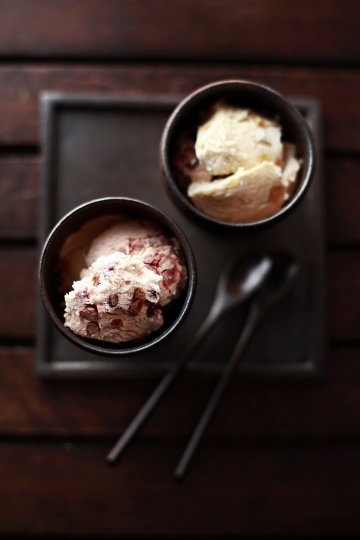
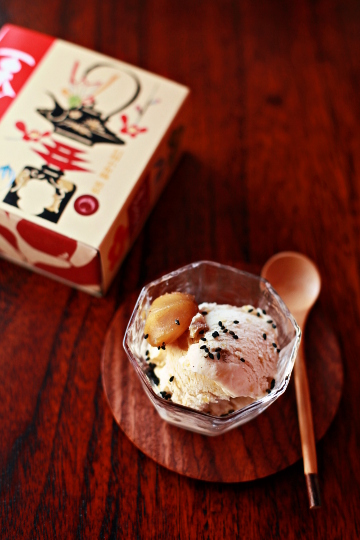
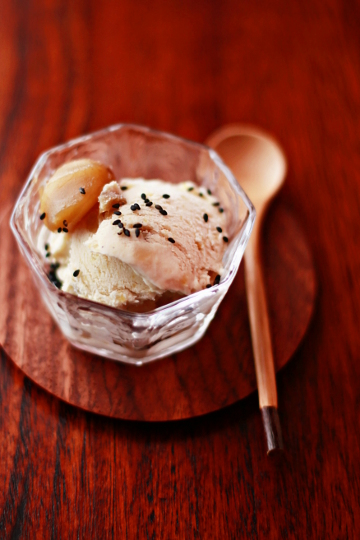
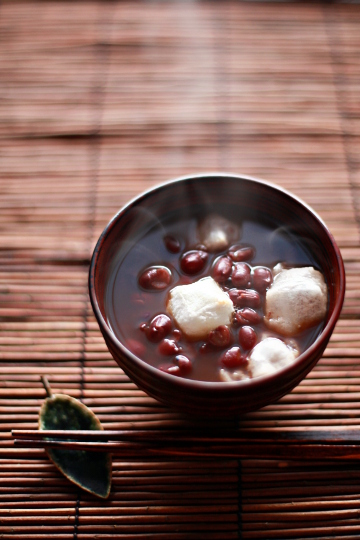
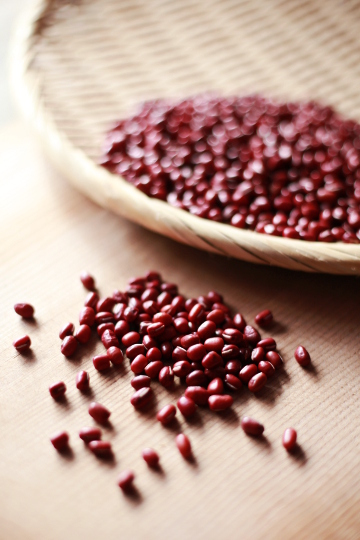
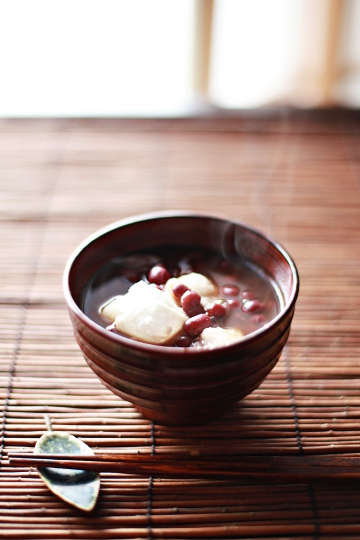
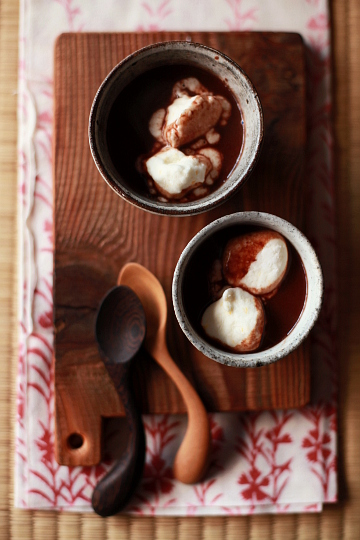
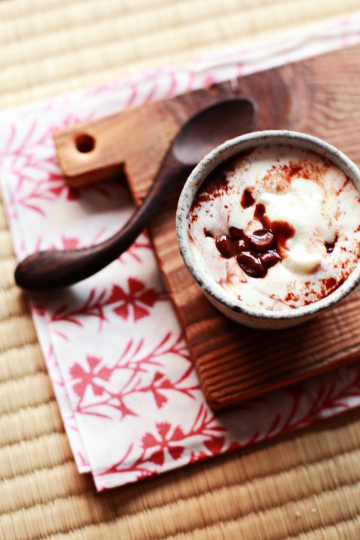
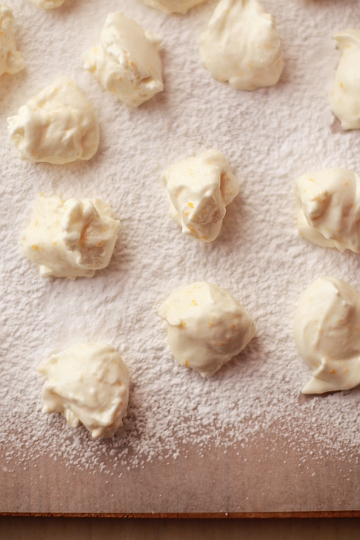
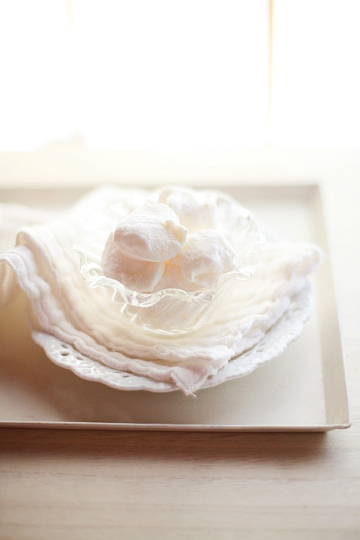
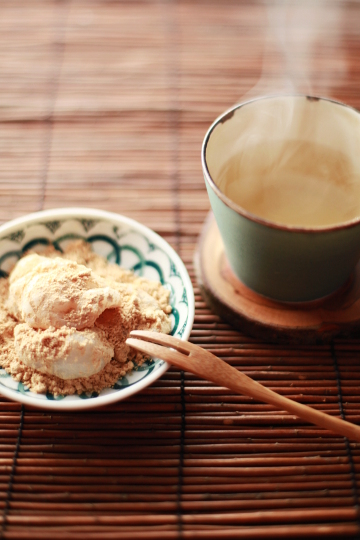

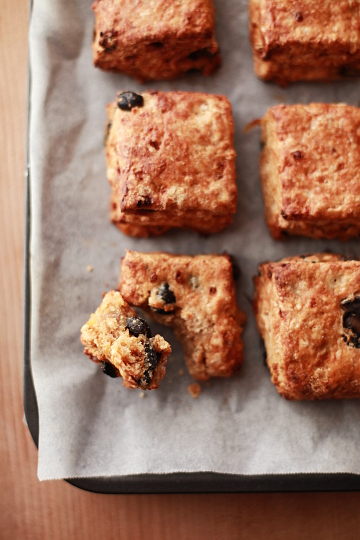
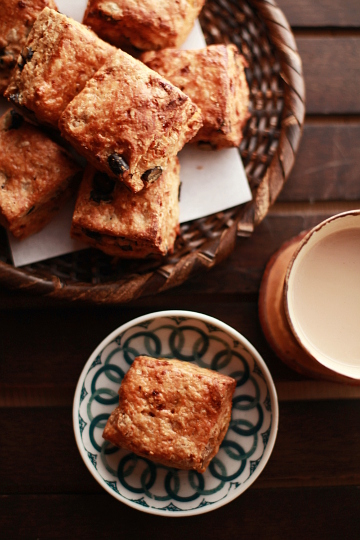
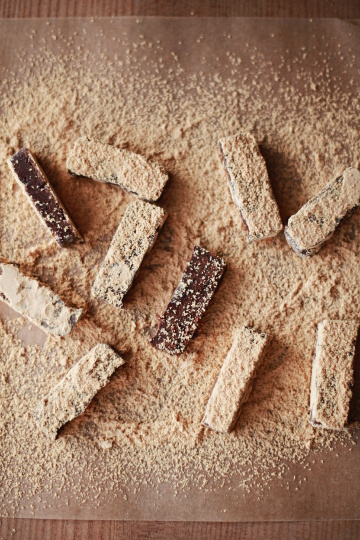
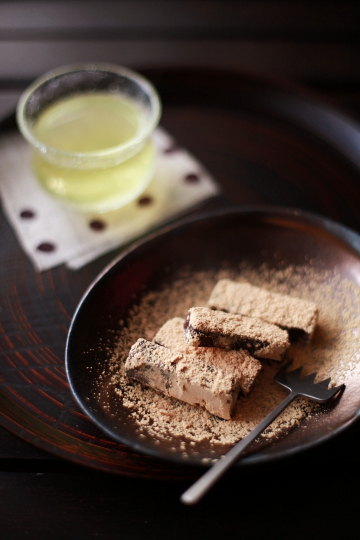
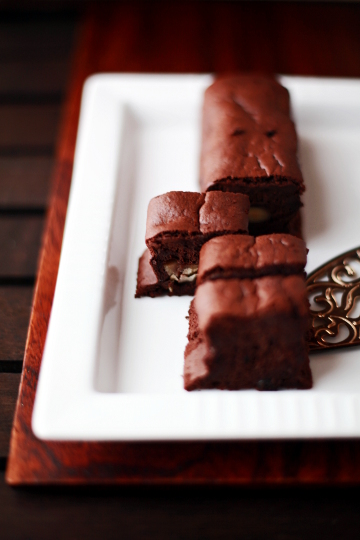
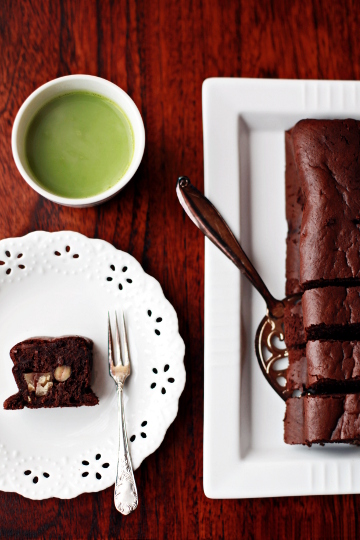
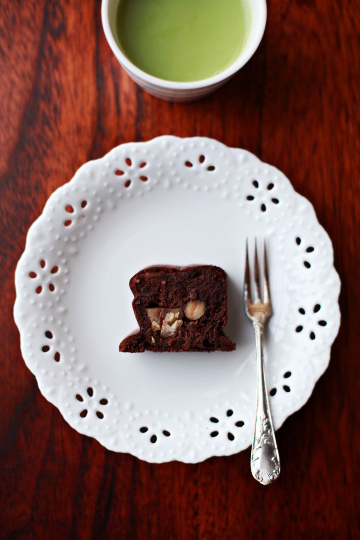

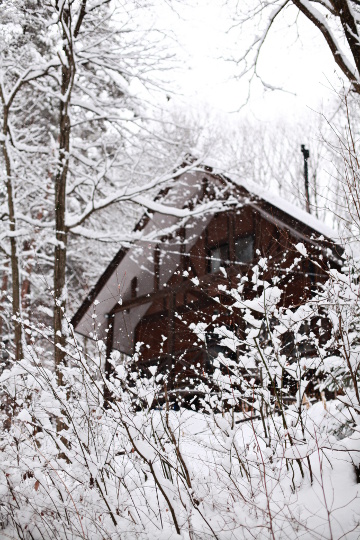




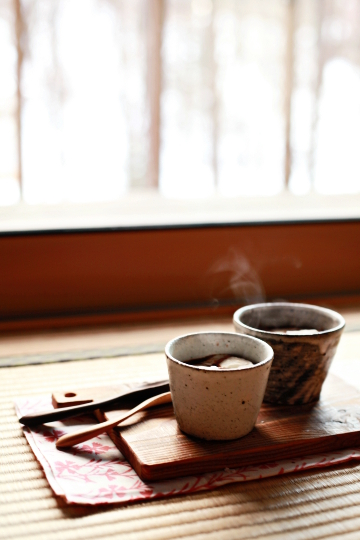
16 comments:
I love your twist on the pulla (Finnish cinnamon roll)! And those snowy photos really make me miss home!
Hi Chika, I love this post, your blog and its great atmosphere!!Thanks you...à bientot Lys
Stunning! I love the mood in this post.
Thanks for sharing.
wooooooooooow che delizie di immagini! complimenti, un bacio :)
ps: ho realizzato un nuovo concorso "Fashion Food": in premio 100 euro di shopping! Ti aspetto :)
These are the most beautiful photos! You are so talented. I grew up in Maine and those snow photos remind me of my childhood.
I love your determination not to be discouraged! I know kitchen faliures are hard to get over. All the food looks amazing. Thank you for the insight!
I LOVE that you replaced the corn syrup with honey! What kind of honey did you use?
What a fantastic selection of dishes. I was particularly inspired by the matcha trifles (a second choice they may have been, but what a great idea!) and the hojicha ice cream.
I am a great consumer of hojicha and macha, but am only really just getting my head round cooking with them. Once you start to look though, the ideas just open up. Especially if you are lucky enough to go to Japan and see what wonderful food is created there.
Happy New Year to you too! You photos are all stunning, and those recipes! So decadent, I wish you were my personal cook! All the best to you in 2012, and please keep charming us with your food.
absolutely stunning! i always look out with anticipation to your posts and this one definitely did not disappoint. love matcha, love yuzu, love kinako, dislike anko as well... memories of my childhood... arigato Chika!
Aiko
Your photos are fabulous, thanks for sharing!
Just found your blog, your photos are BEAUTIFUL, and the desserts so delectable.
You really know how to live. Congrats!!!!
Thanks so much for sharing your blog! I am inspired to bake and travel!
dear all, thanks so much for your comments as always!
Maria - i find finish cinnamon rolls one of the most versatile things to make, not to mention very comforting to make and eat! i shall enjoy the snow for you while you enjoy the oz sunshine for me..!
Maureen - thanks! i've never been to maine but i bet they've got much more snow than in here...
Haley - i think i used a bold-flavored multifloral honey here, but can't be too sure... oops!
thanks again all cx
Hi Chika,
I've been completely enthralled by your enchanting blog and your many baking adventures on both She Who Eats and 一期一膳、thank you for sharing such tasty and elegant confections :) (It's really, really good practice for me to read your wonderful posts in Japanese!!)
I've been living in Nara Prefecture since last August teaching English through the JET program, and it has been the most incredible joy meeting wonderful people, discovering myriad delicacies, and trying my hand at bite-size treats in my own tiny kitchen. Just the other week I made marmalade with はっさく in lieu of yuzu, thanks to your excellent recipe! I can't thank you enough for your inspiration :) Please let me know if there is any particular kansai or Nara specialty you would like to try, it would be my pleasure to share my new home with you!
Wishing you the very best, and happy baking as we enter the wonderful season of blossoms~
Very sincerely,
Melanie
Post a Comment